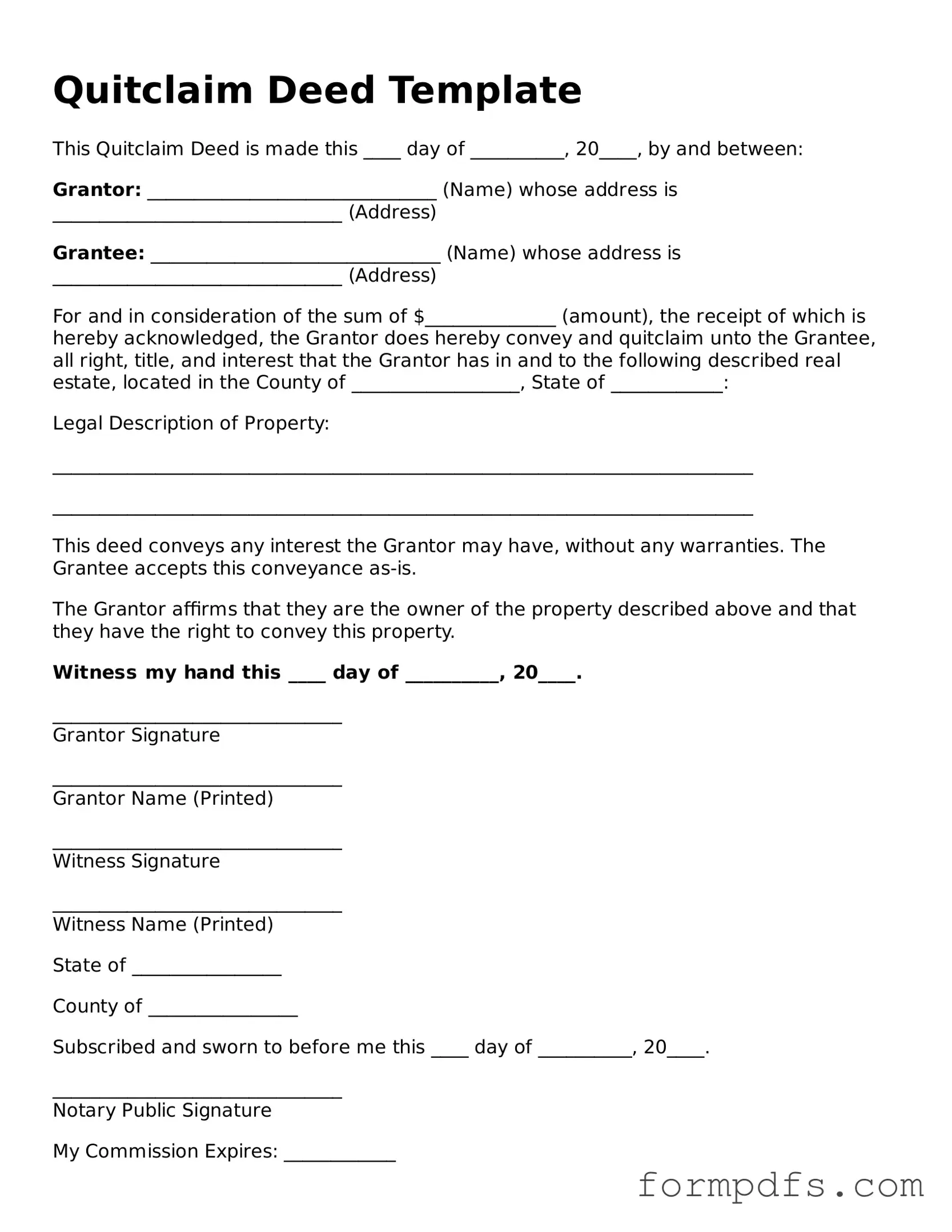What is a Quitclaim Deed?
A Quitclaim Deed is a legal document used to transfer ownership of real estate from one person to another. It provides a way for the current owner, known as the grantor, to relinquish any claim they may have to the property. Unlike other types of deeds, a Quitclaim Deed does not guarantee that the grantor actually owns the property or has the right to transfer it. It simply transfers whatever interest the grantor may have, if any.
When should I use a Quitclaim Deed?
Quitclaim Deeds are often used in specific situations. Common scenarios include transferring property between family members, such as when parents give property to their children. They are also used during divorce settlements, where one spouse may transfer their interest in a property to the other. Additionally, a Quitclaim Deed can be useful for clearing up title issues or correcting mistakes in property records.
Do I need to notarize a Quitclaim Deed?
Yes, a Quitclaim Deed typically needs to be notarized to be legally valid. This means that the grantor must sign the document in the presence of a notary public, who will then affix their seal. Some states may have additional requirements, so it's important to check local laws to ensure compliance. Once notarized, the deed should be filed with the appropriate county office to officially record the transfer.
Can a Quitclaim Deed be contested?
Yes, a Quitclaim Deed can be contested in certain situations. If someone believes that the deed was signed under duress, fraud, or without proper understanding, they may challenge its validity. Additionally, if the grantor did not actually have ownership of the property at the time of the transfer, the deed may also be disputed. It's important to consult with a legal professional if you think you may need to contest a Quitclaim Deed.
